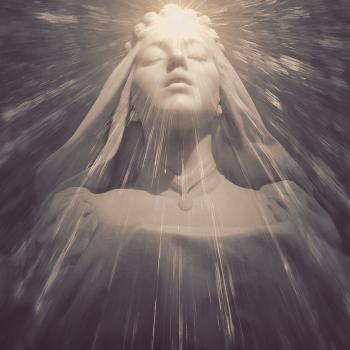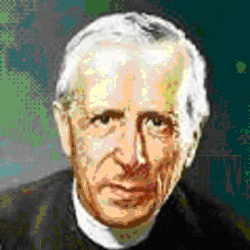The Meaning of Shiva Energy
A. Introduction
In the two previous essays in this series, as I examined the notion of a Holy Trinity, I focused on the Christian version while touching briefly upon Jewish, Buddhist, and Hindu versions. In this, the final essay in the series, I want to focus on another Hindu version and use it as a springboard for understanding and transcending our current global situation.
B. Shiva Energy
In the first version of the Hindu Trinity – one I dealt with in the second essay in this series – God is spoken of as, Sat (Being), Chit (Knowledge), Ananda (Bliss). There’s a second version that speaks of God as Brahma (Creator), Vishnu (Sustainer) and Shiva (Destroyer). Shiva doesn’t sound particularly spiritual, godly, or inviting, but that is because we don’t understand either his title or his function. ‘Destruction’ is the essence of evolution and progress. Were it not for the dissolution of the previous arrangements, we – and the very universe itself – would be stuck in a boring stagnation, a kind of Groundhog Day, in which nothing grows or flows or develops. It would soon lead to a cosmos-wide dementia in which long-term memory is lost and we keep re-living an incarcerated present moment. And there is a huge difference between a ‘present moment’ which is eternal and embraces ‘The All’ – on the one hand – and a ‘present moment’ in which we are locked into a single detail which is utterly without context. It is the difference between monochromatic tunnel vision focused solely on the little patch of ground beneath my feet and never being able to move them, and a 360-degree, 3-D holographic image of Source.
Imagine watching a movie by going into the projectionist’s box and fingering the frames one at a time, only to completely forget the frames you’ve previously scanned while, concurrently, being utterly unable to anticipate future frames. That’s what life would feel like without Shiva energy.
Without a sense of history, our times are going to look like ‘The End Times’; indeed, that is what many of the doomsday demagogues are proclaiming. But we’ve been here before. Many times. Which is not to say that we should simply go along for the ride. With the advent of Homo Sapiens Sapiens, the evolution of consciousness has given way to conscious evolution. We are no longer hapless victims of negligent Nature nor of a Distant Demanding Deity. Rather, we are architects of our own future; but we can build either a global Auschwitz or a cosmic cathedral. Either way, it is Shiva at work.
C. Dissipative Structures
In 1977, a brilliant Russian-born, Belgian scientist, called Ilya Prigogine, was awarded the Nobel Prize in biochemistry for his notion of ‘dissipative structures’. He had found an elegant solution to a long-term conundrum in science, namely how can complexity and entropy co-exist. Entropy, the second law of thermodynamics, states that all natural systems left to their own devices will eventually run themselves down into chaos e.g., a steaming hot cup of coffee left unattended for a couple of hours will become tepid and settle itself at room temperature; or a bicycle left out in the rain over the winter will rust itself into extinction. And yet, according to evolutionary theory, more and more complex life forms continue to develop e.g., simple single-celled organisms, over the course of 3.7 billion years, became dolphins and Irishmen. How come? Prigogine showed that by re-arranging its own constituent elements, a system can avoid entropy and attain complexity.
Let me use an analogy to simplify this. Imagine you’ve just bought a jigsaw puzzle and your young child attempted to build it. He spills all 1,000 pieces onto the table and attempts to solve the puzzle. After a week, he gives up. There are huge gaps in the puzzle, lots of pieces wrongly forced together – creating humps and hollows – and lots of other pieces left over unused and apparently no place for them to fit in. So, you patiently take over. You’re gonna have to disassemble most of what he has done, and then by putting the same pieces into different locations, you wind up with the ‘perfect’ puzzle – no gaps, no bumps, and no pieces left over. Well, that’s pretty much what dissipative structures did.
But it is not simply a scientific issue, it’s the very secret to life. If you’re serious about your psychological wellbeing and your spiritual purpose, you must realize that, in the jigsaw puzzle of incarnation, all the pieces that you need are present and all the pieces that are present are needed. There are no extraneous people, events, or situations in your life; you have to use all of them to build the image of God during this journey. And that is the function of Shiva, to help you, to help humanity, in fact, to help all sentient life to keep evolving. Which brings me to my next point.
D. Revolution Versus Evolution
There is a huge difference between these two words and between these two processes. Revolution is always fast, angry, and ultimately (long-term) ineffective. It always eventually creates a backlash, which can be another revolution or an evolution. Revolution has no appreciation for tradition and its achievements. It is a form of fundamentalism, reducing history to simplistic, critical bumper stickers. In fact, it quickly reduces complexity to an ideologically precipitated entropy. All the hard-won gains are lost, and the great heroes of yore are sacrificed on the altar of ingratitude. Revolution cuts itself off from its own ancient roots, reducing the fruit-bearing tree to mere firewood.
Evolution, on the other hand, is always gradual, gentle, loving, and long-term effective. It is epigenetic, meaning that each subsequent stage of development transcends and incorporates all of its previous stages. As a tree stretches its branches and leaves towards the sun, it is stabilized and nurtured by its roots. And, as equal partners, the leaves – via photosynthesis – harvest sunshine for chlorophyll, sending needed nutrients back down to the roots. Evolution honors tradition and builds upon it. Leaves cannot survive without roots, nor can roots survive without leaves.
In most tree species, the volume and spread of the root system is almost a mirror image of the above-ground branches, twigs, and leaves. Were it not so, strong winds would topple the tree and expose roots, disconnecting them from their food source. And, of course, a trunk, limbs, branches, twigs, and leaves that took an axe to their own root system, would achieve the most inglorious of pyrrhic victories. It would be a murder-suicide pact.
We’ve reached a bifurcation point in human development, between what I call Homo Sociopathicus (dedicated to violence) and Homo Spiritualis (dedicated to love). We must choose to be either agents of revolution or agents of evolution.
Om Namah Shivaya!

















